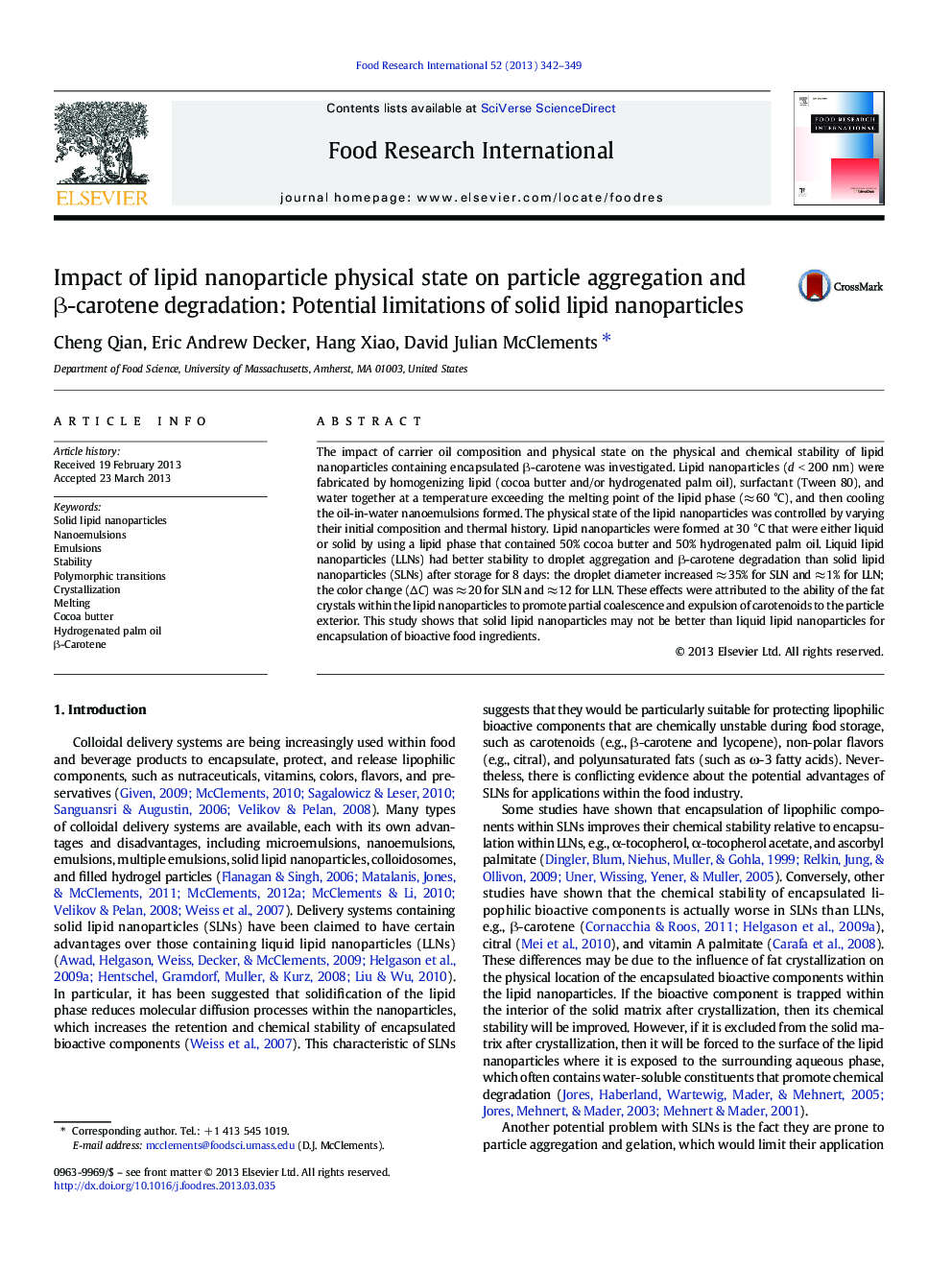| Article ID | Journal | Published Year | Pages | File Type |
|---|---|---|---|---|
| 6398255 | Food Research International | 2013 | 8 Pages |
â¢Solid and liquid lipid nanoparticles (SLNs and LLNs) were prepared.â¢LLN had better physical stability than SLN.â¢Î²-Carotene was more chemically stable in LLN than SLN.
The impact of carrier oil composition and physical state on the physical and chemical stability of lipid nanoparticles containing encapsulated β-carotene was investigated. Lipid nanoparticles (d < 200 nm) were fabricated by homogenizing lipid (cocoa butter and/or hydrogenated palm oil), surfactant (Tween 80), and water together at a temperature exceeding the melting point of the lipid phase (â 60 °C), and then cooling the oil-in-water nanoemulsions formed. The physical state of the lipid nanoparticles was controlled by varying their initial composition and thermal history. Lipid nanoparticles were formed at 30 °C that were either liquid or solid by using a lipid phase that contained 50% cocoa butter and 50% hydrogenated palm oil. Liquid lipid nanoparticles (LLNs) had better stability to droplet aggregation and β-carotene degradation than solid lipid nanoparticles (SLNs) after storage for 8 days: the droplet diameter increased â 35% for SLN and â 1% for LLN; the color change (âC) was â 20 for SLN and â 12 for LLN. These effects were attributed to the ability of the fat crystals within the lipid nanoparticles to promote partial coalescence and expulsion of carotenoids to the particle exterior. This study shows that solid lipid nanoparticles may not be better than liquid lipid nanoparticles for encapsulation of bioactive food ingredients.
